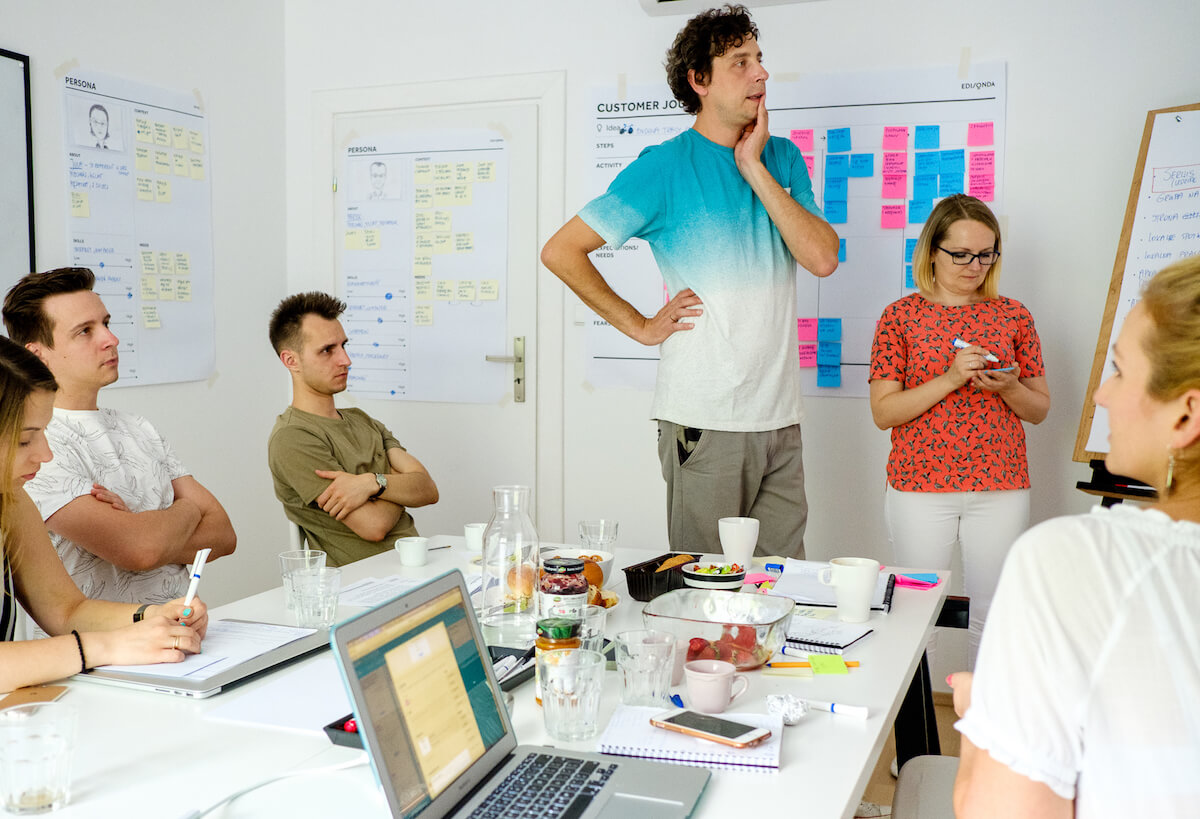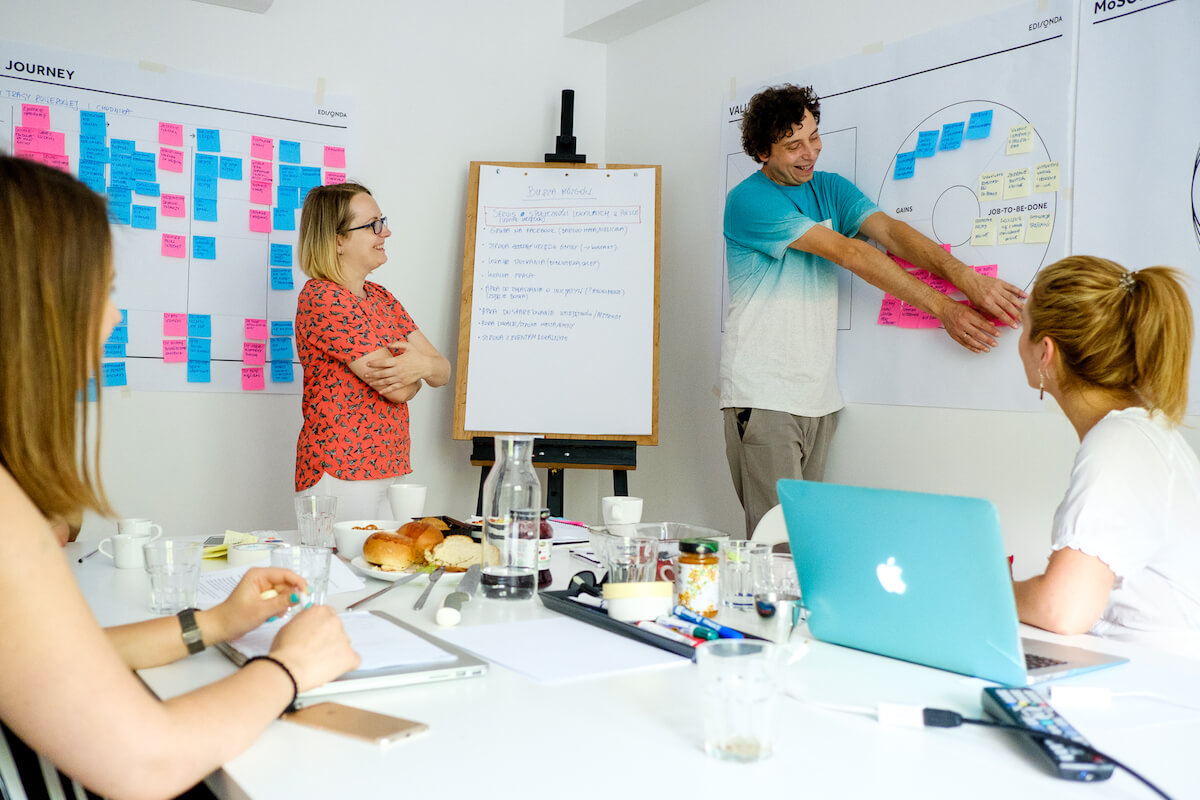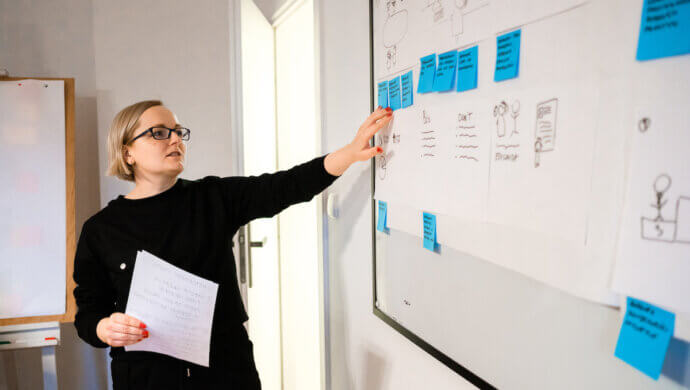Both beginners and experienced businesspeople dream of conquering the market with a new, revolutionary product. The former often go out on a limb – they set up a startup, raise funds and take into account the possibility of failure. The latter use their know-how and many years of experience. In both cases, the conviction of attractiveness and uniqueness of the idea often results in skipping the research and concept verification phase.
We haven’t researched yet, but we know it’s a good idea
According to Professor Clayton Christensen of Harvard Business School, author of “The Innovator’s Dilemma” more than 30,000 new products hit the market each year, 80% of which fail.
Many companies still believe that research is an expensive and unnecessary addition to the product development phase. The way we work contributes to this. When a product spends months moving from department to department, significant problems and oversights are identified only when it reaches the hands of users. Most often it is too late to save it.
Instead of deciding on high-risk experiments and months-long implementations of unverified ideas, it’s worth reaching for the MVP concept. Thanks to it, you can quickly check how your vision and ideas compare to reality.
The 3 main causes of new product failures are:
- lack of market demand,
- skipping the prototyping and testing phase,
- choosing the wrong target group.
What is a Minimum Viable Product? Sell the product before you manufacture it
The Minimum Viable Product strategy was created to soften the hard landing of a new product. Minimum Viable Product is often mistakenly referred to as a cheaper or worse version. Meanwhile, it should be considered more as a certain testing framework.

It should reflect and contain key functionalities. Often in a form far from perfection, but functional enough for users to take advantage of it. As the creator of MVP, Jeff Goetleff says – the main goal is to collect data on the needs of the audience. Testing the product under market conditions and constantly formulating and verifying hypotheses.
Fake it, until you make it
In the context of MVP, this maxim works quite well. There is no sense in investing in complex and expensive implementation of unverified functionalities. You have to accept the fact that in most cases intuition that something will work or will meet with a warm reception is definitely not enough.
iThere are many methods of effective, low-budget verification of product assumptions. It can be done with a leaflet, a website or a mock-up application. The proof is in the examples of many leading companies that started with a simple landing page. Today they are global platforms with millions of users.
How did Dropbox do Minimum Viable Product?
Hypothesis: Users have a problem with file syncing and will be willing to use an online service that provides it to them.
Method of verification: Video demo made available on Digg.
Process: The demo made the waiting list for the product grow from 5,000 to 75,000 takers.
How to work on Minimum Viable Product development? Agile and effective.
Central to the MVP development process is the iterative nature of the solutions introduced. Thanks to UX research, product improvement and functionality testing is done on the fly. Sometimes even hour by hour. Thanks to this the concept is comprehensively verified. Additionally, information is gathered which in the subsequent development phases may constitute effective arguments in talks and negotiations with investors. This way of working requires close team cooperation and efficient knowledge exchange.
We work with the largest
Minimum Viable Product development is facilitated by working in agile sprints. All team members participate in the UX design, testing and implementation process. Thanks to this they learn from each other, gain a sense of empowerment and a better understanding of the product. At the same time, it is easier to convince the team to participate in experiments and so-called research – low-budget, quick tests with users. It’s also worth citing research showing that the Agile methodology has a 55% success rate for implemented products, compared to just 29% for the still popular Waterfall methodology.
Advantages of Minimum Viable Product:
- It allows to verify the most risky hypotheses in a fast and effective way.
- Properly selected methods and tools can bring big savings.
- It allows to go from tested idea to product even in 6 weeks.
How to prepare MVP strategy?
- check if you are solving the right problem
The key is to identify and verify the problem. Your own thoughts and observations are not enough. Market demand for the product should be confirmed by research.
- see what the competition is doing
Once you are confident that the problem has been properly located, prepare a benchmark of existing solutions, including their strengths and weaknesses. Based on these, you can write down value propositions that should be tested.
- look at trends and forecasts
Take a close look at trends and forecasts, not just market trends but also social trends. Consider what ecosystem the product will operate in. Developments in technology and the state of the economy can be important factors in its success or failure.
- verify the target group
It is also very important to verify the assumptions about the target audience. Before you start researching their needs, you need to check if they are the people who will be using your product. Many companies started by setting up fundraisers on Kickstarter. This allowed you to verify the interest of potential recipients.

How do we do it?
As a design and research studio, we are often involved in the development of new products. Whether we are designing a communication platform, a new IoT product, an e-commerce tool or an internal customer portal, we try to follow best practices.
- We often start the process with extensive exploratory research, allowing us to verify hypotheses about target groups and user needs.
- An indispensable element of the process are workshops with the client. We use UX and design thinking techniques which allow to effectively exchange knowledge and map the vision and business assumptions of the product.
- If the project requires it, we organize ethnographic research to look closely at the everyday problems and users’ needs.
- Then we prepare prototypes and test them in the target environment or with selected groups of customers.


